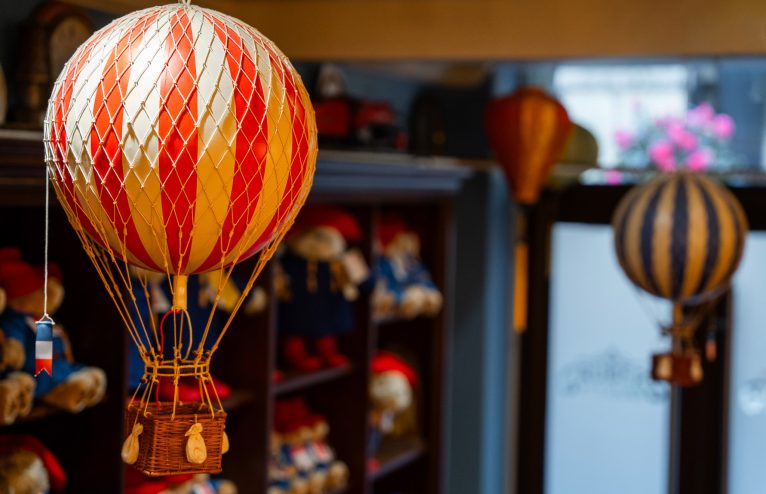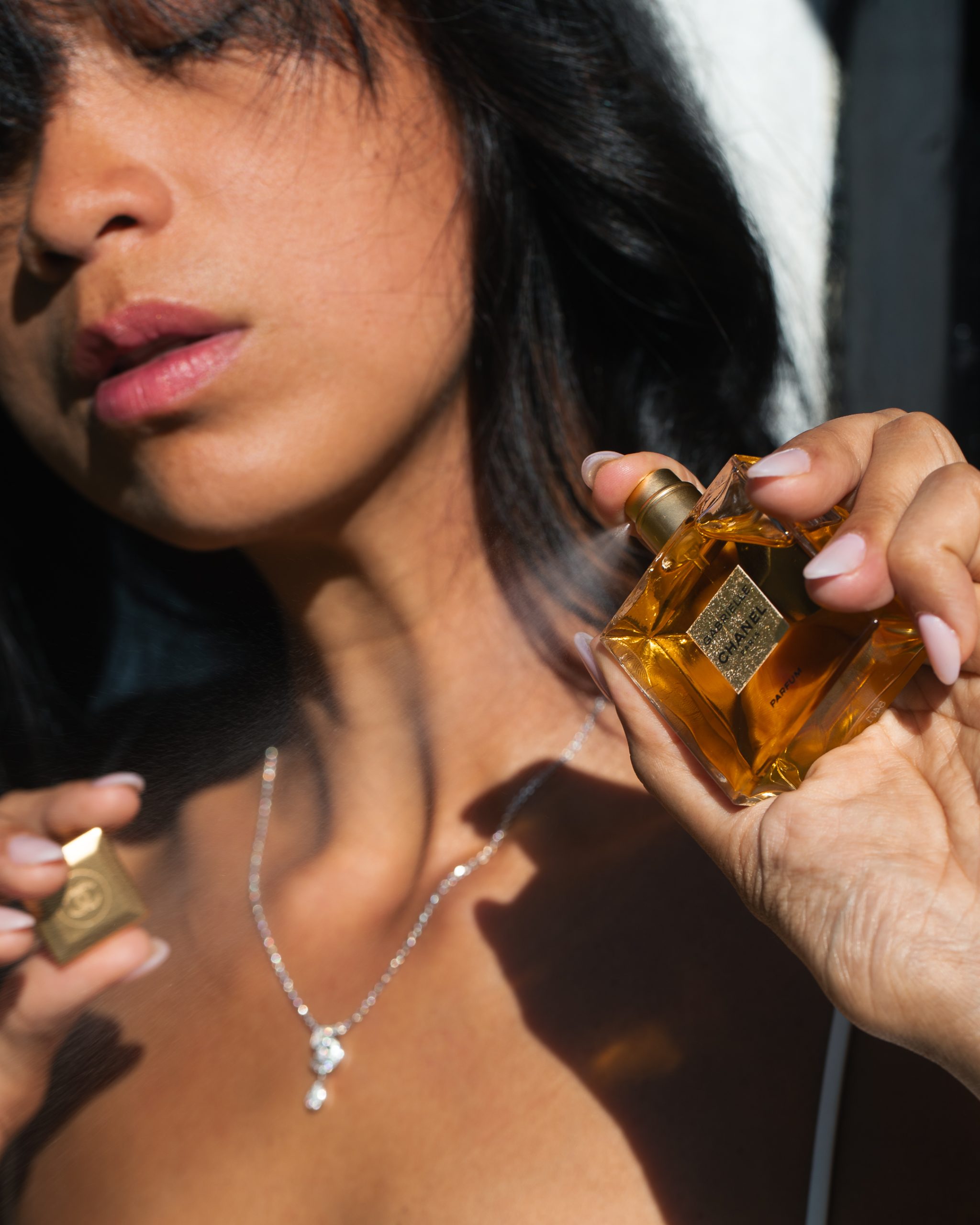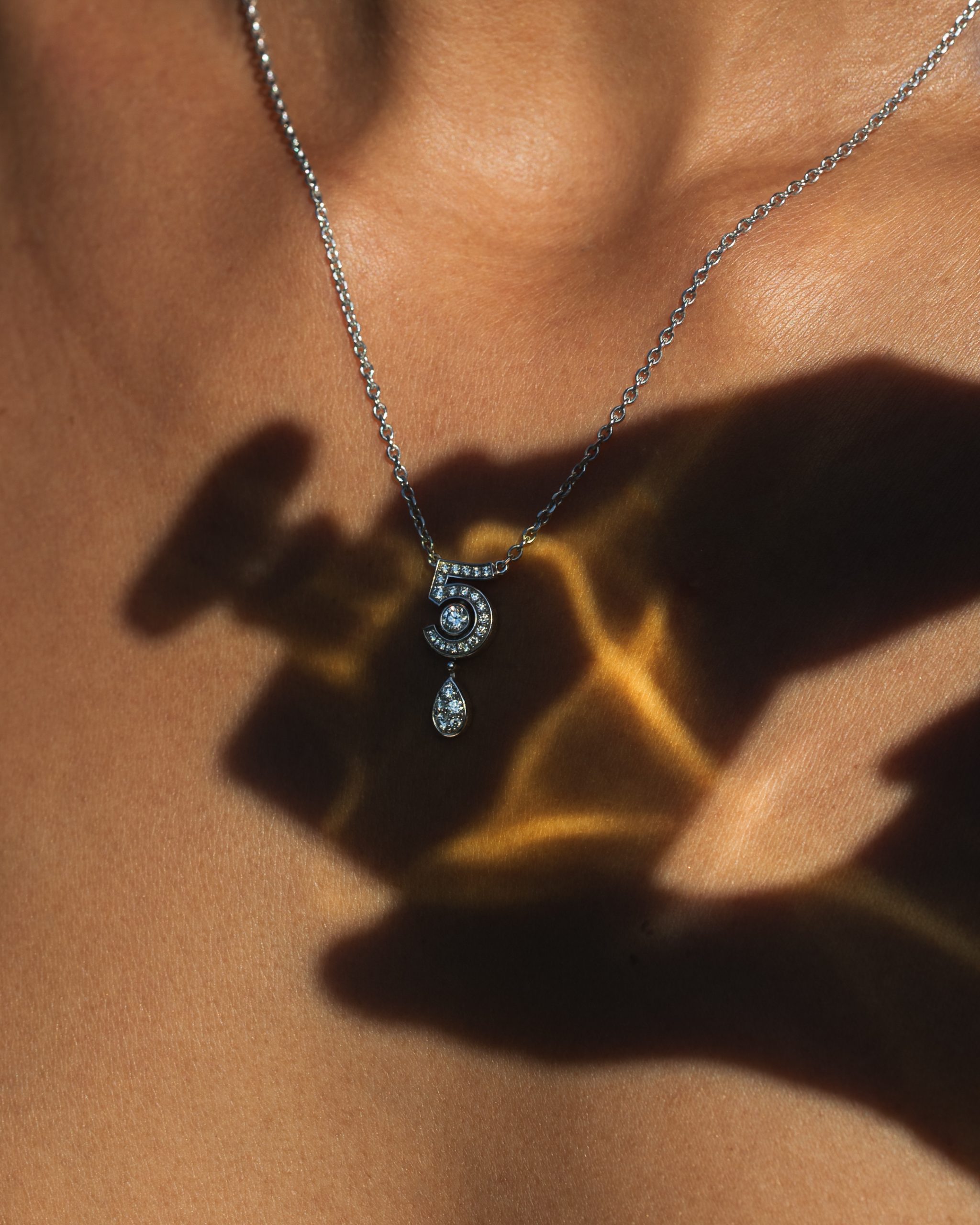There’s something magical about a field filled with flowers rolling as far as the eye can see, and even more so knowing that those delicate petals will soon be bottled into the iconic perfume, Chanel No.5, right before your eyes.
Citizen Femme travelled to Grasse, the fragrance capital of the world, along with photographer and creative director Patty Searle, to discover the magic of the jasmine harvest and how one of the best-known perfumes in existence, Chanel No.5, comes to be…
Under a somber, cloud-cluttered sky, thousands of petite white flowers peek out from fresh green shrubs that roll down the never-ending hills. It’s late September and jasmine season – which runs between August and October – is in full bloom in Grasse, a pocket of the French Riviera that can trace its history of luxury perfumery back to the 16th century.
But it would be these fields, over 100 years ago, that would launch the region into the heart of French perfume when, in 1921, the legendary nose Ernest Beaux chose the jasmine of Grasse as the central note of Chanel’s classic Chanel No.5.
The rest, as they say, is history.
The jasmine fields
To this day, Grasse’s jasmine fields define both this area of France, and Chanel’s most iconic scents; anchored at the heart of not only No.5, but the fresh white floral scent inspired by the brand’s iconic founder, Gabrielle. And yet, at first glance you wouldn’t know it.
The only indication of the pedigree of these particular fields is a tiny hint of the brand’s iconic double Cs: on a sign discreetly overlooking the flowers, and as covetable emblems on the worker’s wellington boots and wicker baskets.
It makes sense: this landscape holds the future of Chanel fragrances in a powerful yet delicate balance. The 350 hectares may seem vast at first, but they also hold the only source of every petal ever used for Chanel perfumes.
So notoriously private is the location that this is the first time ever that photographers were invited to witness the jasmine harvest. Visits will continue to be limited to protect the ecosystem of the flowers and the fragrances they will become.
“When you arrive at the fields it is kind of strangely unassuming,” reveals the creative director and photographer Patty Searle. “It is very surreal being there and I was just trying to savour it. From a creative perspective, I also knew how good an opportunity it would be to take photos because, although it was overcast, that meant that the lighting was perfect. It wasn’t too bright, not too sunny, and the fields really pulled focus because of the colours. You get there and you just see the fields because nothing else distracts you. The sky is grey, but then the greens, the whites, the browns, everything just pops out. Even through to the colours of the pickers’ shirts. It was pure magic, to be honest.”
There’s also something almost poetic about the darkening sky, considering the jasmine flowers in question bloom at night, ready to be picked in the early morning. And, against that backdrop, the white petals, glittering among the bushes like jewels, invite you to get even closer to enjoy their scent. After all, as you will discover, the joy and sensuality of jasmine is in its delicacy, so you don’t initially experience a cloud of perfume as you walk through the fields.
“We were given the opportunity to pick some jasmine flowers and the scent is actually so subtle at first,” recalls Searle. “Then, we were told to crush the petals, and that’s when you really experience it. I just stood there and tried to take it all in. I literally had my eyes closed at one point because it was just beautiful. People were probably looking at me wondering ‘what’s she doing in the middle of the fields with her eyes closed?’ But, I wanted to take those moments and really take in the smell of the jasmine.”
“What I think makes it even more special is that the fields are filled only with one flower,” Searle muses. “It’s actually quite a unique experience to be able to focus on just one scent – that misty cloud of jasmine. If you think about it, when else do you have the opportunity to not be overcome by all kinds of smells coming at you? [certainly not in busy cities, that’s for sure.] But, in the Grasse fields, you are surrounded by just one.”
“It’s actually quite a unique experience to be able to really focus on just one scent…”
The story behind a fragrance
What a visit to the fields also gives you is a special insight into the story and heritage behind each Chanel fragrance ingredient, extending beyond the bottles, all the way back to the fields where they are grown. That’s emphasised through another rather unique element of Chanel fragrances: all the production is done on site, and it is as painstaking as the creation of Chanel’s couture.
“[Chanel are] the only ones who actually have the factory next to the fields,” says Searle. “That’s because every second it takes to bring the delicate jasmine to the factory makes such a huge difference to the quality. They even have to pick it so quickly, because the time that it’s in the basket makes a huge difference… It was surreal to think that the flowers that we were picking were actually going into Chanel No.5 – a fragrance known all around the world.”
Of course, those petals were just a fraction of the sheer quantity of flowers needing to be collected to create the iconic perfume. Each gatherer needs to collect around two kilograms of flowers a day to meet demand, and 350 kilograms of jasmine is then required to create just one kilogram of concrete (a highly aromatic wax used for making fragrance absolutes). That means Chanel requires at least 3.5 million flowers, and they are all picked by hand.
“Next time you go into a shop and see the iconic little Chanel bottle, recognise what goes into it – the effort and the love, from the people behind it,” Searle appeals. “Normally you just see a perfume and smell it, but to actually be there and have seen the whole process, from the very time the flowers are picked to the first spritz from the bottle, that’s something else. It made me realise how strongly each Chanel scent has its own story and it’s not just about wearing the fragrance at the end. It’s the process that makes it really special, and it’s so beautiful that there is this delicate place behind each Chanel fragrance – including the most recognisable famous fragrance in the world – which is so unassuming and in a delicate state of balance.”
The fine jewellery collection
This particular jasmine season was also special for another reason. It was the first time the Chanel No.5 fine jewellery collection, so interlinked with the iconic fragrance, was able to be photographed in this incredible landscape.
Designed to be placed on the same pulse points as you would spritz your fragrance, these delicate yet impactful pieces draw attention to your ears, neck and wrists as they catch the light, with playful yet sophisticated nods to the classic Chanel No.5 scent. “Being able to shoot the collection in the jasmine fields just made the experience even more special, because it brought everything together,” says Searle.
“You might think, ‘oh, it’s fine jewellery, how can I wear it in the fields’, but then you get there and it doesn’t matter what environment you’re in – it just works. I think that’s because wearing the pieces is as effortless as wearing a fragrance; they give me that classic feel, just like the scent. I love the earrings [they can be worn as both studs and drop accessories], but if I had to pick a favourite piece it would probably be the necklace. I just felt so beautiful wearing it. And, with the ring or the bangle, the effect is very subtle, but when your attention is drawn to them you realise, ‘wow, that is beyond beautiful.'”
That sense of joyful wearability was exactly what Gabrielle Chanel was all about, of course. With her fashion collections she emphasised the ability to move freely and to do what you wanted with your day, unrestricted by your clothes and in turn society. Her couture, her fragrances and now the jewellery collection are all designed to make you feel feminine and powerful in equal measure. So, it’s fitting that the jasmine fields that are so integral to them have that same delicate sense of balance.
Visiting the fields makes the jewellery even more special, Searle concludes. “You really recognise how much the scent, jewellery and the location are intertwined together. They are very delicate, very classic, and very beautiful. It’s just a very unforgettable experience, for each and everyone who’s experienced it.”
We may earn a commission if you buy something from any affiliate links on our site.
Photo credits throughout: Patty Searle



























Any Questions or Tips to add?